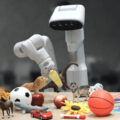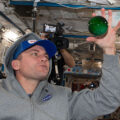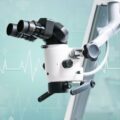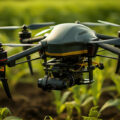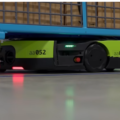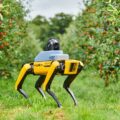Space exploration has been an area of great interest and fascination for people since the beginning of time. The idea of venturing into the unknown reaches of space, discovering new worlds, and gathering data about our universe has inspired generations of scientists, engineers, and astronauts. However, the harsh and unpredictable environment of space presents many challenges for human exploration. This is where robotics technology comes into play. Robotics has advanced dramatically over the years, and today, robots play a crucial role in space exploration.
History of Robotics in Space Exploration:
The use of robots in space exploration dates back to the 1960s. The Soviet Union launched the first lunar rover, Lunokhod 1, in 1970, which marked the beginning of the use of robots in space. Since then, the use of robots in space exploration has grown rapidly, and today, robots are used in various missions and for different purposes. The NASA Mars rovers, Sojourner, Spirit, Opportunity, and Curiosity are some of the most well-known robots used in space exploration.
Types of Robots in Space Exploration:
There are several types of robots used in space exploration, each designed for specific tasks. Some of the most common types of robots include:
- Rover Robots: Rover robots are designed to traverse the surface of a planet or moon. They are equipped with wheels or tracks and are capable of traveling long distances, collecting data, and analyzing the environment.
- Remotely Operated Robots: Remotely operated robots are controlled by a team of engineers and scientists on Earth. These robots are used to conduct experiments and gather data in environments that are too hazardous for human exploration.
- Autonomous Robots: Autonomous robots are designed to operate without human intervention. They are equipped with sensors, cameras, and other instruments to gather data and send it back to Earth.
- Orbital Robots: Orbital robots are used to conduct missions in space, including mapping, remote sensing, and observation. They are equipped with cameras, sensors, and other instruments that allow them to gather data about the environment and send it back to Earth.
Advantages of Robotics in Space Exploration:
There are several advantages to using robots in space exploration. Some of the most significant advantages include:
Cost-Effective: Robots are significantly cheaper to launch and operate than manned missions. They are also less risky, as the risk to human life is minimized.
Flexibility: Robots can be programmed to perform a wide range of tasks, from exploring the surface of a planet to conducting experiments in orbit.
Endurance: Robots can operate for long periods without rest, allowing them to gather more data and complete more missions than human astronauts.
Hazard Reduction: Robots can be sent into environments that are too dangerous for human exploration, such as the surface of a planet with a toxic atmosphere or a hazardous asteroid.
Improved Science: Robots are equipped with instruments and sensors that allow them to gather data and send it back to Earth. This data can be used to improve our understanding of the environment and make new discoveries.
Challenges of Robotics in Space Exploration:
Despite the many advantages of using robots in space exploration, there are also several challenges that must be addressed. Some of the most significant challenges include:
Reliability: Robots must be designed to operate in harsh and unpredictable environments and must be able to withstand the extreme conditions of space.
Communication: Robots must be able to communicate with Earth in real time, sending data and receiving commands. The communication link between the robot and Earth can be disrupted by radiation, solar flares, and other factors.
Maintenance and Repairs: Robots in space cannot be easily repaired or maintained, making it essential that they are designed to be reliable and robust.
Power: Robots in space must be equipped with a reliable power source, such as solar panels or batteries, to ensure they can operate for extended periods.
Autonomy: Robots must be designed to operate autonomously, as human intervention is not possible. This requires advanced programming and a high degree of reliability in the robot’s sensors and systems.
Human Interaction: Robots must be designed to work with human astronauts and must be able to interact with them in a safe and effective manner.
Integration with other Spacecraft: Robots must be able to integrate with other spacecraft and be compatible with their systems and equipment.
Conclusion:
Robotics technology has played a crucial role in space exploration and continues to be an essential tool for future missions. Robots are capable of performing a wide range of tasks, from exploring the surface of a planet to conducting experiments in orbit. They are also cost-effective and less risky than manned missions. Despite the many challenges of using robots in space, such as reliability and maintenance, their use will continue to be a critical aspect of space exploration for years to come.
